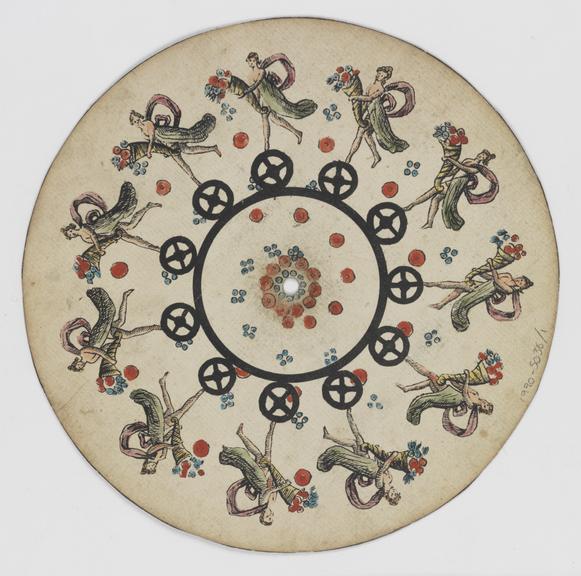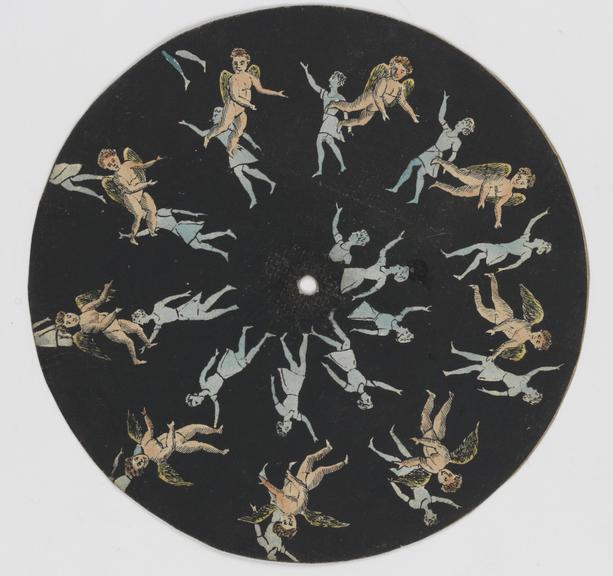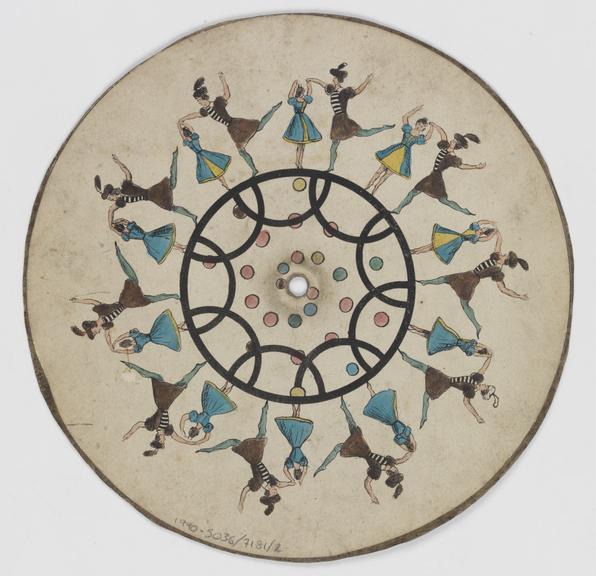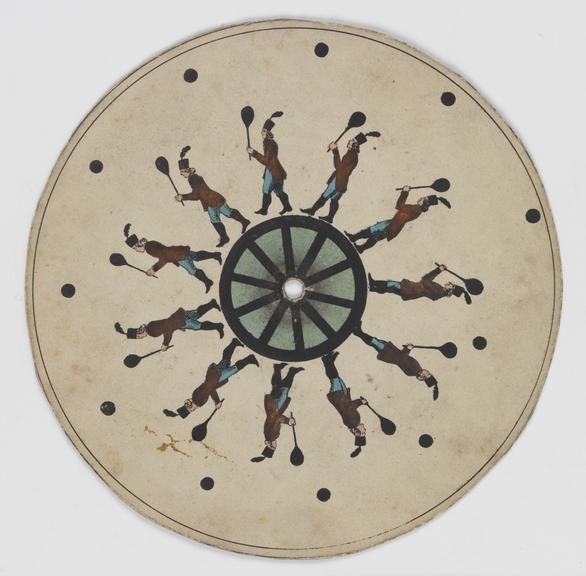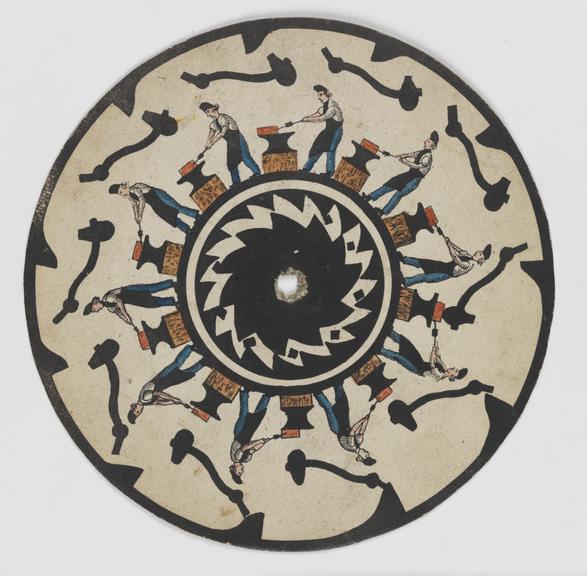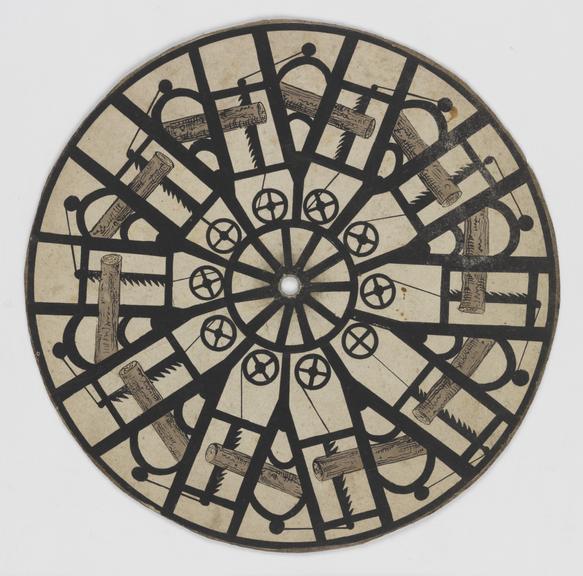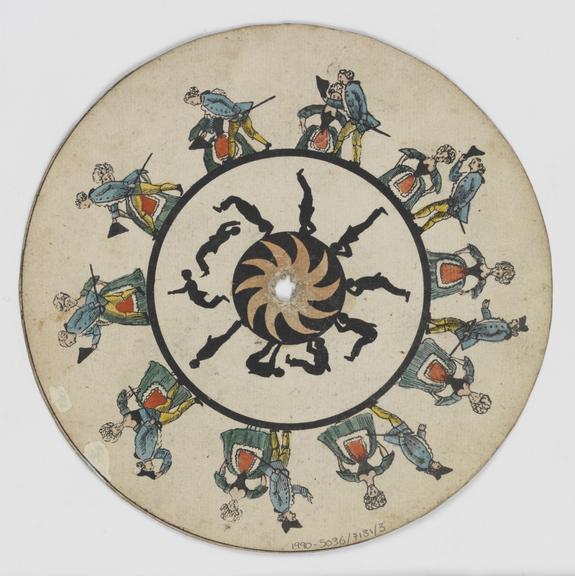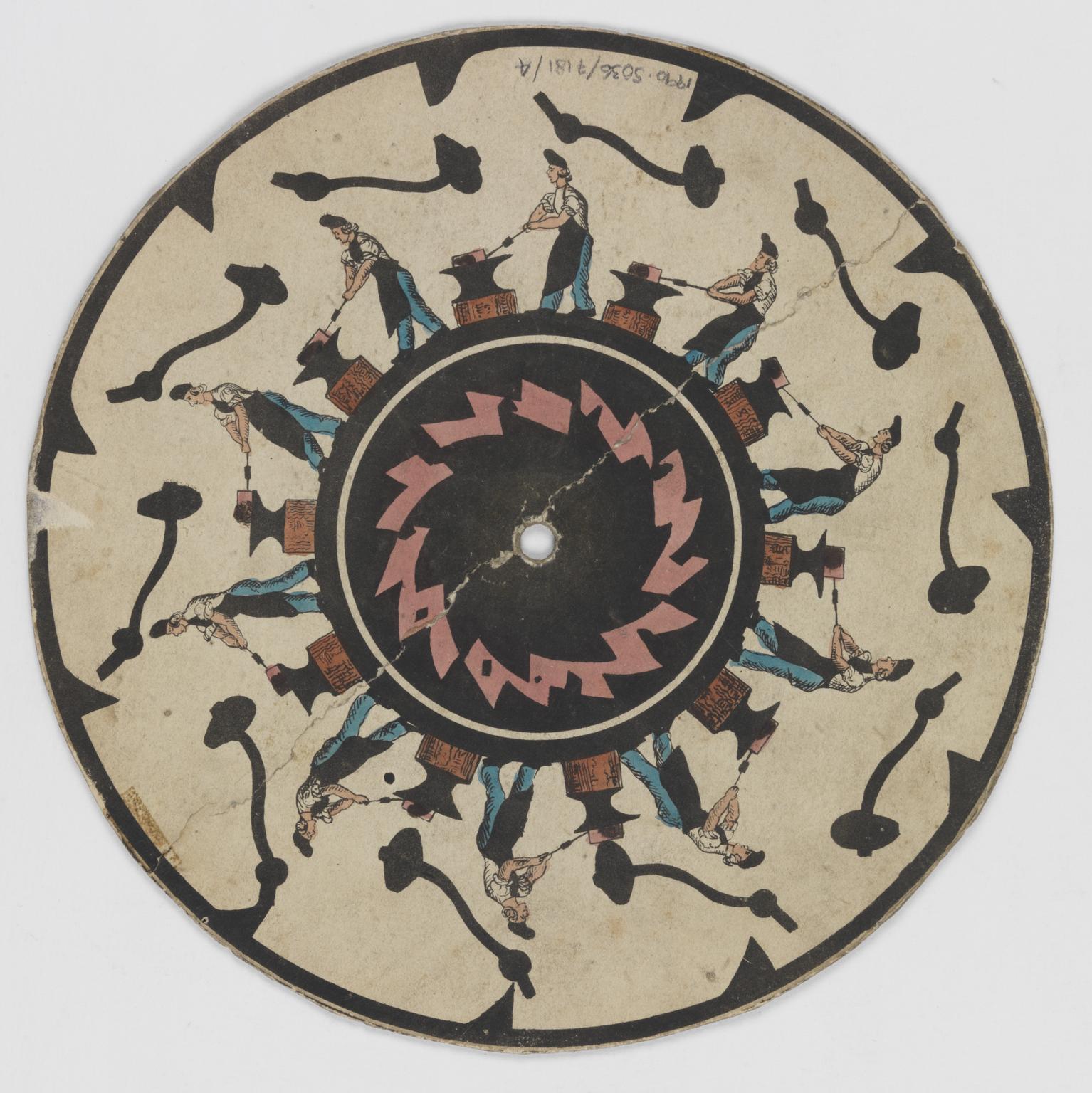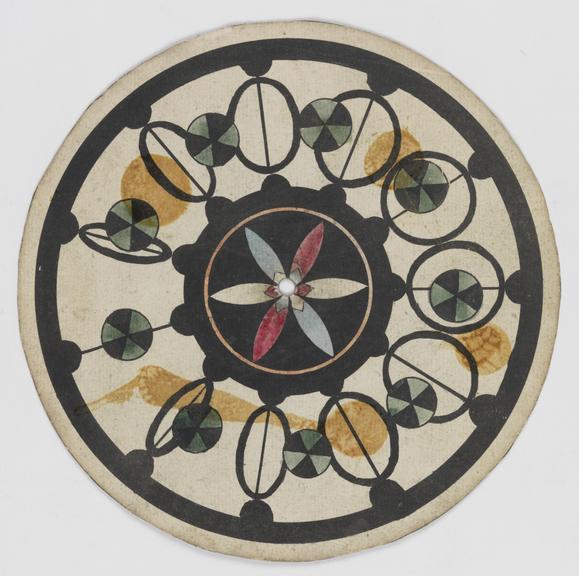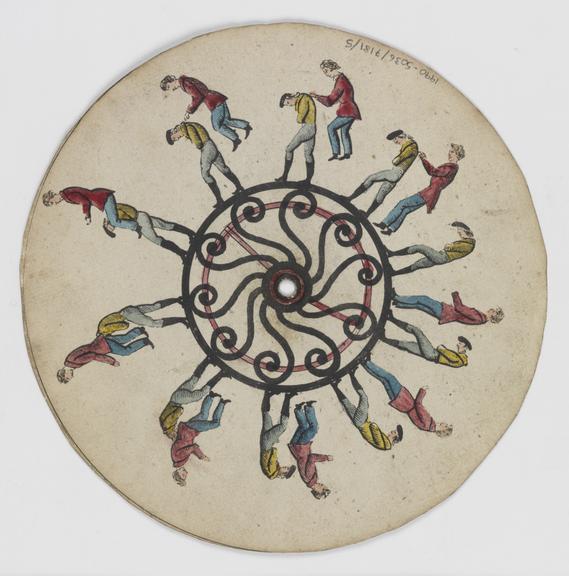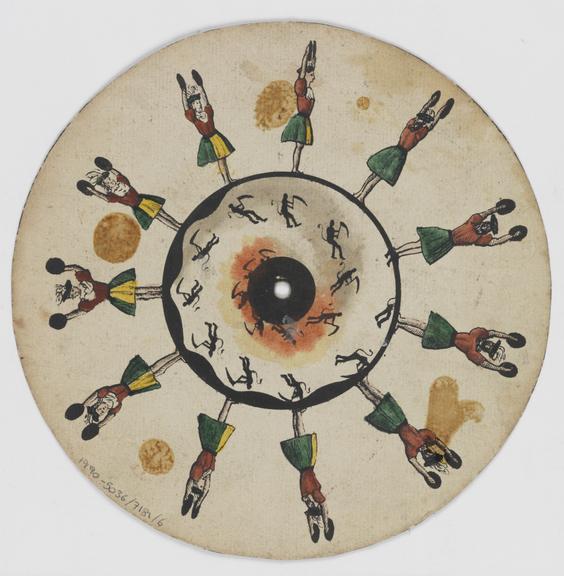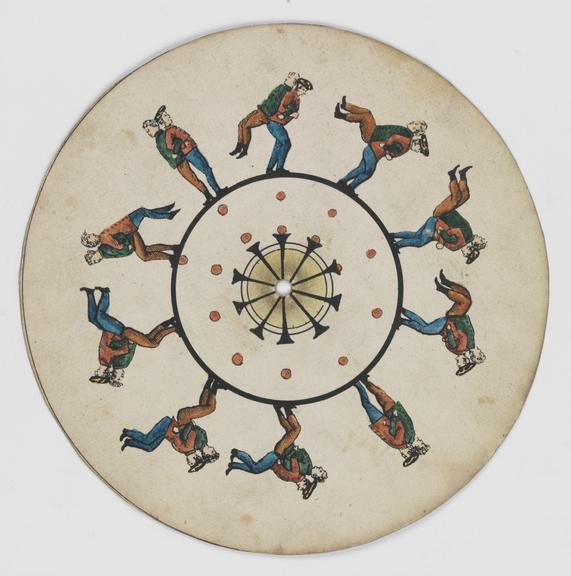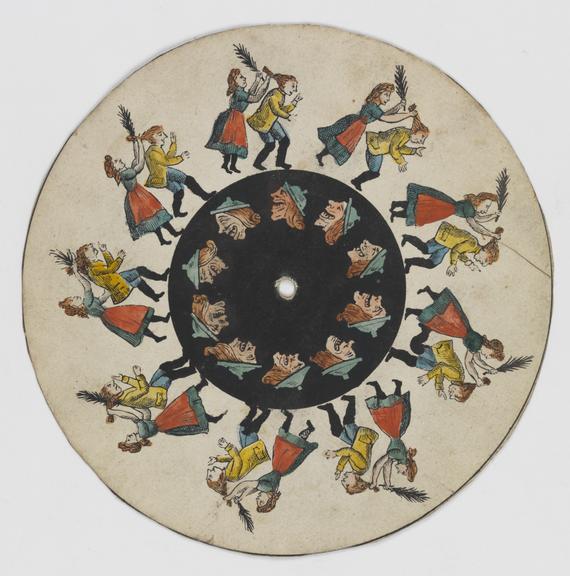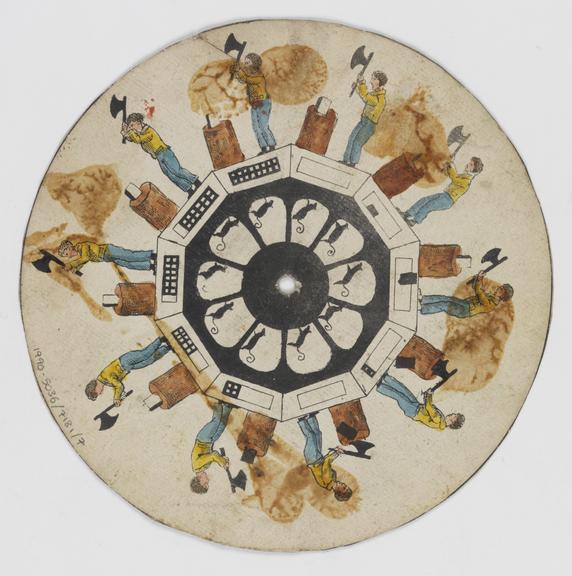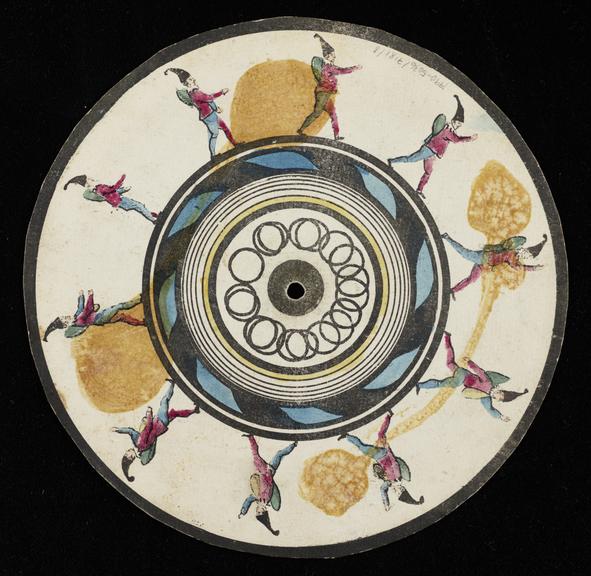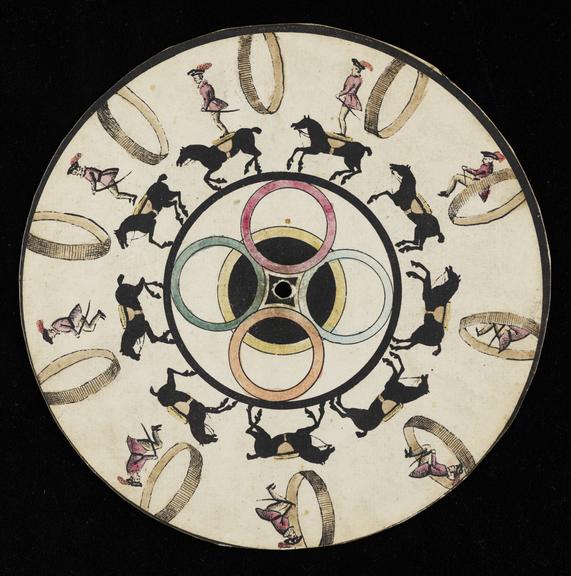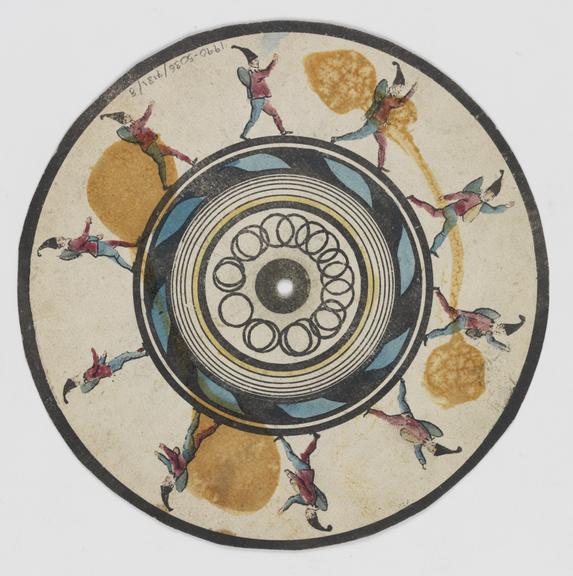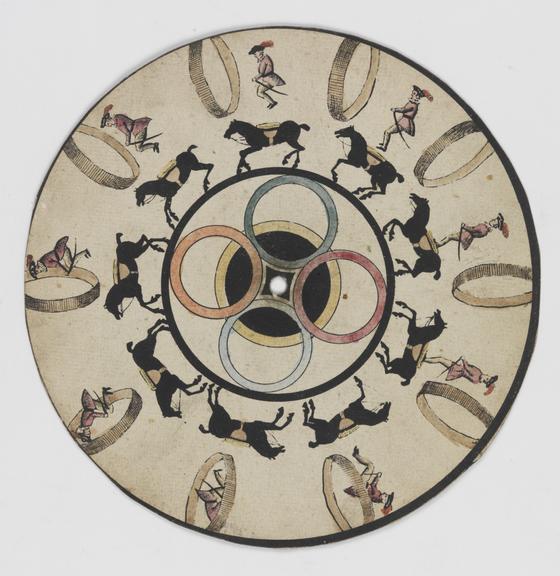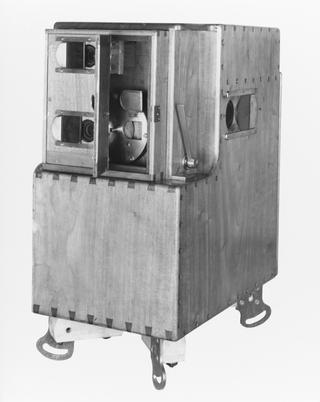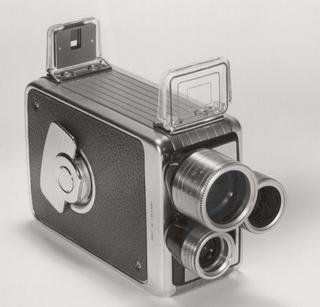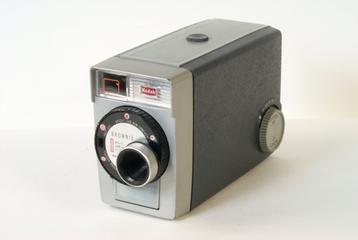Phenakistoscope Disc
One of eight double-sided Phenakistoscope picture discs, 180mm-224mm diameter (some badly damaged from adhesive). Dancer with cornucopea; cherub and female figure.
More
The phenakisticope was invented almost simultaneously by the Belgian physicist Joseph Plateau and the Austrian professor of practical geometry Simon Stampfer. It is held with the printed side of the disc facing a mirror. When the disc is spun the viewer looks at its reflection through the apertures on the disc's circumference and the drawings appear to move.
- Measurements:
-
overall: 180 mm,
- Materials:
- cardboard
- Object Number:
- 1990-5036/7181/1
- type:
- phenakistoscope and optical toy
- Image ©
- Science Museum Group Collection




